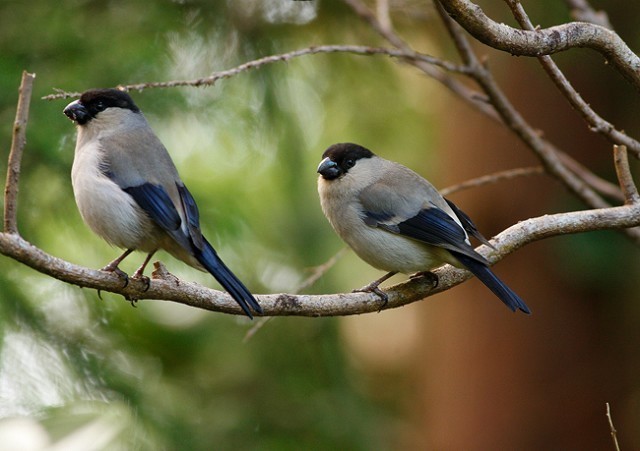Red List 2016 reveals a mixed outlook for the world's birds
The 2016 IUCN Red List update recognizes over 700 'new' species, which takes the world list to over 11,000 for the first time, but also delivers a chilling warning about the grim outlook faced by some of the world's most popular cagebirds.
Many much-loved species are now being trapped and traded into near-extinction in the wild. Arguably the most iconic of those uplisted to a higher threat category is African Grey Parrot, which is now listed as Endangered. An intelligent, charismatic bird and an excellent mimic of the human voice, it is one of the most popular avian pets in North America, Europe and the Middle East. It is such a common sight in pet stores across the world that many will be surprised to learn that the bird is now in danger of extinction.
But it is precisely its popularity as a pet that has put it in peril. Every year, thousands of wild-caught African Greys are plucked from Africa's rainforests. As a result of these unsustainable harvests, in some parts of the continent, the bird is nearly extinct. A recent study in Ghana, which replicated roost counts performed in 1992, discovered that Grey populations in the country had declined by over 90 per cent in that time — and perhaps by as much as 99 per cent.

African Grey Parrot (Photo: Reto Kuster)
The situation is even more acute in Asia, with 19 species being uplisted to a higher threat category, including six to Critically Endangered. These species are Rufous-fronted Laughingthrush, Javan Pied Starling, Black-winged Myna, Grey-backed Myna, Grey-rumped Myna and Nias Hill Myna. Each of these species is endemic to Indonesia, and while deforestation is a factor, the main driver of their decline is the local bird trade. This is largely centred around Java, Sumatra and Borneo, where keeping songbirds is an integral part of local culture. It is entirely possible that they may disappear within a generation.
Chris Shepherd, Regional Director of TRAFFIC South-East Asia, commented: "It is important that the conservation status of these species are being updated to reflect the threats facing them, but much more needs to be done to address this looming Asian songbird crisis. It is due to lack of research, lack of protection measures and ineffective regulation that these species have been ranked in this list of threatened species in the first place."
However, the 2016 Red List also delivered some encouraging news from far-flung islands across the globe. Birds confined to just a single island or archipelago are some of the most at-risk species in the world, not only because their range is so small, but because they are often ill-equipped to face the threats of predators such as cats and rats when they are introduced to the island. For this reason, a big percentage of existing avian extinctions are island endemics.
However, a deluge of downlistings in this year's Red List shows that conservation work can help struggling island populations to rebound. Examples include Azores Bullfinch, once Europe's rarest passerine, which has benefited from extensive habitat restoration efforts and tripled its population. It has been downlisted for the second time in a decade, and is now considered Vulnerable.

Azores Bullfinch (Photo: Cazeribeiro)
Montserrat Oriole, which was almost wiped out in the wake of the volcanic eruptions that destroyed villages and forests alike on the island in 1995, has been downlisted from Critically Endangered to Vulnerable, with populations gradually bouncing back under close surveillance from the RSPB. St Helena Plover has also been downlisted from Critically Endangered to Vulnerable.
As the Red List Authority for birds, BirdLife International also completed the second phase of a two-part comprehensive taxonomic review of birds. This year's update focused on passerines and has led to the recognition of 742 new species, many of which were previously treated as subspecies, taking the number of passerines worldwide to 6,649. As a result, the number of recognized bird species worldwide passes the 11,000 mark for the first time, to 11,121. Of these, 10,960 are extant, and a further five still exist today but are considered extinct in the wild.
Of the new species assessed, 11 per cent are threatened. For example, the recently described Antioquia Wren (Thryophilus sernai) of Colombia has been listed as Endangered as over half of its habitat could be wiped out by a single planned dam construction. Habitat loss to agriculture and degradation by invasive plants have also pushed the striking Comoro Blue Vanga (Cyanolanius comorensis) into the Endangered category.
Thirteen of the newly recognized bird species enter the IUCN Red List as Extinct. Several of these have been lost within the past 50 years, including Pagan Reed Warbler (Acrocephalus yamashinae) of Guam, and O'ahu akepa (Loxops wolstenholmei) and Laysan Honeycreeper (Himatione fraithii), both formerly of Hawaii.
Dr Ian Burfield, BirdLife's Global Science Coordinator, explained: "Unfortunately, recognizing more than 700 'new' species does not mean that the world's birds are faring better.
"As our knowledge deepens, so our concerns are confirmed: unsustainable agriculture, logging, invasive species and other threats — such as the illegal trade highlighted here — are still driving many species towards extinction."
In the coming weeks, the BirdLife website will publish a series of articles taking a wider look at the biggest success stories and concerns to come from this year's Red List.

